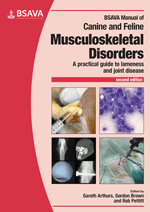
Full text loading...

When performed correctly and using the most appropriate modality, imaging should significantly reduce the differential diagnoses for a case and can often allow a specific diagnosis to be made. This chapter provides in-depth guidance on the use and interpretation of radiography, computed tomography, magnetic resonance imaging, ultrasonography and scintigraphy.
Imaging, Page 1 of 1
< Previous page | Next page > /docserver/preview/fulltext/10.22233/9781910443286/9781910443286.3-1.gif

Full text loading...

































